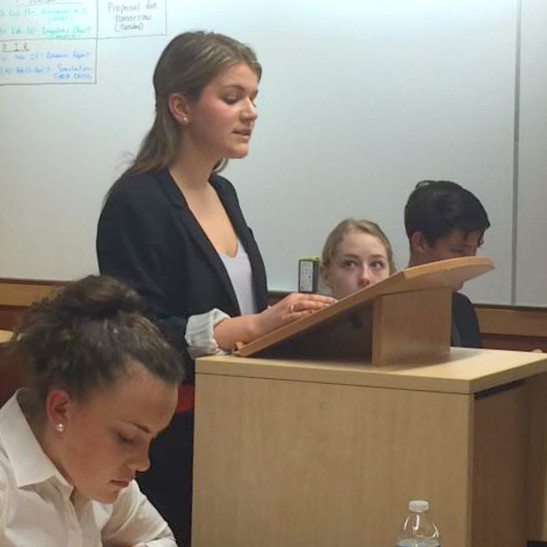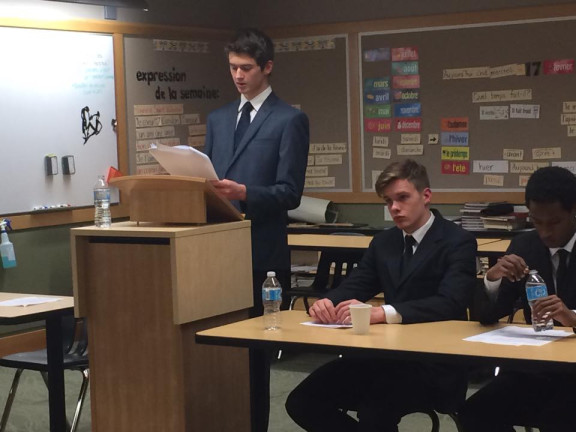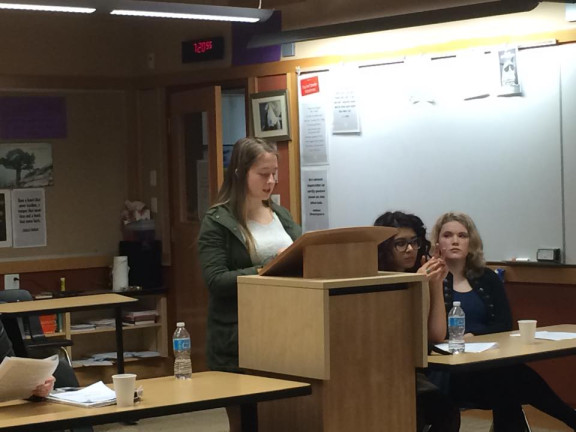50p

R v Nur
There is something special about Brentwood’s law class. It is a unique course that is hands on and application based. First term, our class’s focus was on a criminal mock trial. This term we constructed an appeal based on an actual case that is currently being examined in court.
The case revolves around a man named Mr. Nur who was apprehended and arrested after fleeing from an officer when in possession of a loaded restricted firearm that is banned in the criminal code under the firearm act. Mr. Nur is not contesting his arrest, as he is aware that he violated the law, but he is contesting the three-year minimum sentence that this law mandates. Section 95 of the criminal codes states that any person who is in possession of a loaded or unloaded restricted firearm without the correct authorization is subject to a minimum term of imprisonment of three years, with a maximum of ten years. Mr. Nur claims that this three year minimum is a direct violation of section 12 of the Canadian Charter of Rights and Freedoms. Section 12 states that everyone has the right to not be subject to cruel and unusual punishment.
In class we were divided into groups of four, and then two, each two taking the side of either the Crown or the Defence. We were charged with creating a document that outlined the case and examined if the law, section 95, was a violation of section 12.
To do this we needed to use the Law Test and the Oakes Test. The Law Test looks at different factors to see if a law is a violation of the Charter. For the Crown side, we would be trying to show that the law is not a violation, while the Defence would argue it is.
Using the Oakes test, which allows the government to suspend the rights of an individual if the law meets criteria that proves the issue is important enough, the Crown attempted to show that, even if section 95 is a violation, it is justified under section 1, the Oakes test. Contrarily, the Defence tried to prove that the sentence is not justified.
Our final document came to around 2500 words, 10 pages. In the evening of Thursday, February 19, our groups convened in the Arts Building, waiting to present our cases to real lawyers in a simulation of the appeal.
Nerves and excitement ran high, and everyone came prepared and dressed in their best. We were being marked, not only on our written argument, but also on our public speaking and ability to answer questions on the fly.
The Crown presented, the Defence presented, and the judges deliberated. No matter the outcome, as each judge offered differing opinions on the matter, student participants enjoyed themselves and learned plenty. This was an extremely difficult, stressful, and frightening experience, but also a fulfilling and unique one that every law student will remember for a long time. Hopefully the judges will too!
Special thanks to Madam Justice Vivian, Wit, Hodgson, and Blair for taking the time to come out and participate in our mock trial.
Featherdawn F, Alex ‘15; Photos by Afyz M, Privett ‘17
75p

